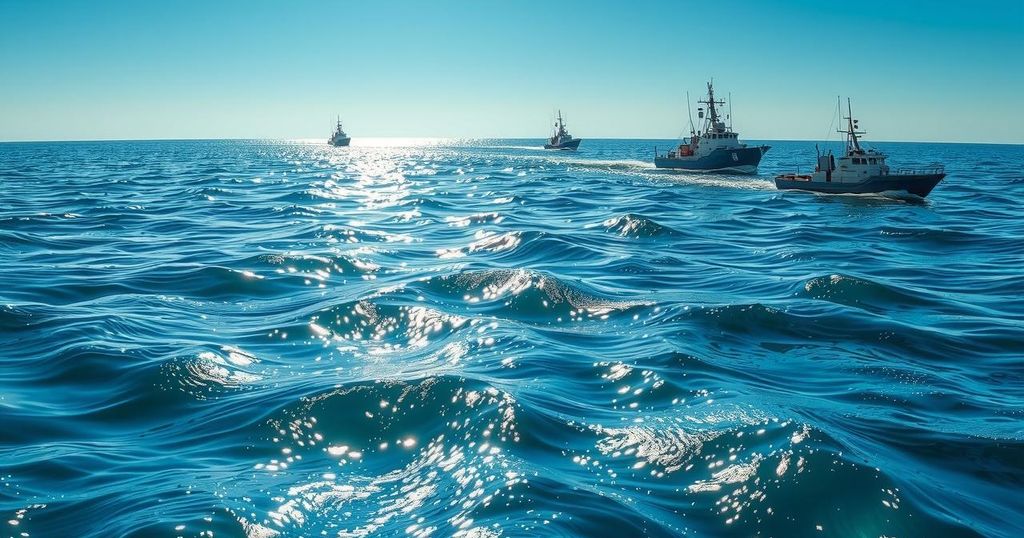Resumption of MH370 Search: Key Details and Technologies Involved
The Malaysian government has authorized a renewed search for the missing MH370 aircraft, with Ocean Infinity leading the effort using advanced technology. The search is set in a designated area the size of metropolitan Sydney, utilizing cutting-edge sonar systems and autonomous vehicles. The operation could take up to 18 months, and a successful find may result in a $70 million reward for Ocean Infinity.
The Malaysian government has commenced a renewed search for Malaysia Airlines flight MH370, more than 11 years after its disappearance, which resulted in the tragic loss of 239 lives. In December, an agreement was reached with Ocean Infinity, a seabed exploration firm, to utilize advanced technology in the hunt for the missing aircraft’s debris.
Ocean Infinity returns to the southern Indian Ocean, about 1,500 kilometers west of Perth, equipped with innovative tools for this new search initiative. The firm, which previously conducted an unsuccessful search in 2018, is recognized for its capability to locate underwater wreckage, as evidenced by its successful recoveries of a missing Argentinian submarine and a long-lost U.S. Navy ship.
The designated search area, comparable in size to metropolitan Sydney, was determined by experts through a refined analysis of data obtained post-disappearance, including weather patterns and satellite information. This approach is informed by the debris that had previously washed ashore on the African coast and various Indian Ocean islands.
Utilizing the new 78-meter offshore support vessel, Armada 7806, which was constructed by Norwegian shipbuilder Vard in 2023, Ocean Infinity aims to maximize search efficiency. This vessel is equipped with autonomous underwater vehicles developed by Kongsberg, featuring cutting-edge sonar technologies designed to operate independently under challenging conditions.
The sonar technologies deployed, including sidescan, synthetic aperture, multibeam, and sub-bottom profiling sonar, enable precise underwater mapping and identification of targets. Sidescan sonar produces high-resolution images, while multibeam sonar creates detailed seafloor topography, both essential for effective search operations.
These vehicles are outfitted with camera systems and lights to photograph detected targets, facilitating the identification process. However, the imaging process occurs only after potential targets are identified via sonar, as it covers a smaller area needing denser survey tracks.
Noteworthy advancements in marine robotics since the company’s last search have allowed for the simultaneous deployment of multiple vehicles at extreme depths, improving the survey’s efficiency and coverage. Data collected by these vehicles will be processed to generate comprehensive maps of the designated search areas.
Adverse conditions are anticipated for both surface operations and the underwater environment. The operational timeframe could extend up to 18 months, with optimal weather conditions projected between January and April. Should Ocean Infinity successfully locate the wreckage, the Malaysian government has allocated a payment of up to $70 million, leading to the possible retrieval of the aircraft’s black boxes, vital for reconstructing the final moments of the flight.
In the event of failure, Ocean Infinity will receive no payment, and the investigation will revert to its initial stages.
In summary, the renewed search for MH370 represents a significant effort by the Malaysian government and Ocean Infinity, utilizing advanced technology and refined analysis to locate the missing aircraft. The ambitious operation, heightened by the innovative capacities of the Armada 7806 and its autonomous vehicles, reflects a comprehensive approach to addressing complex underwater conditions. The success of this venture holds the potential for critical insights into the fate of MH370, which could aid in resolving this long-standing mystery.
Original Source: www.hindustantimes.com




Post Comment